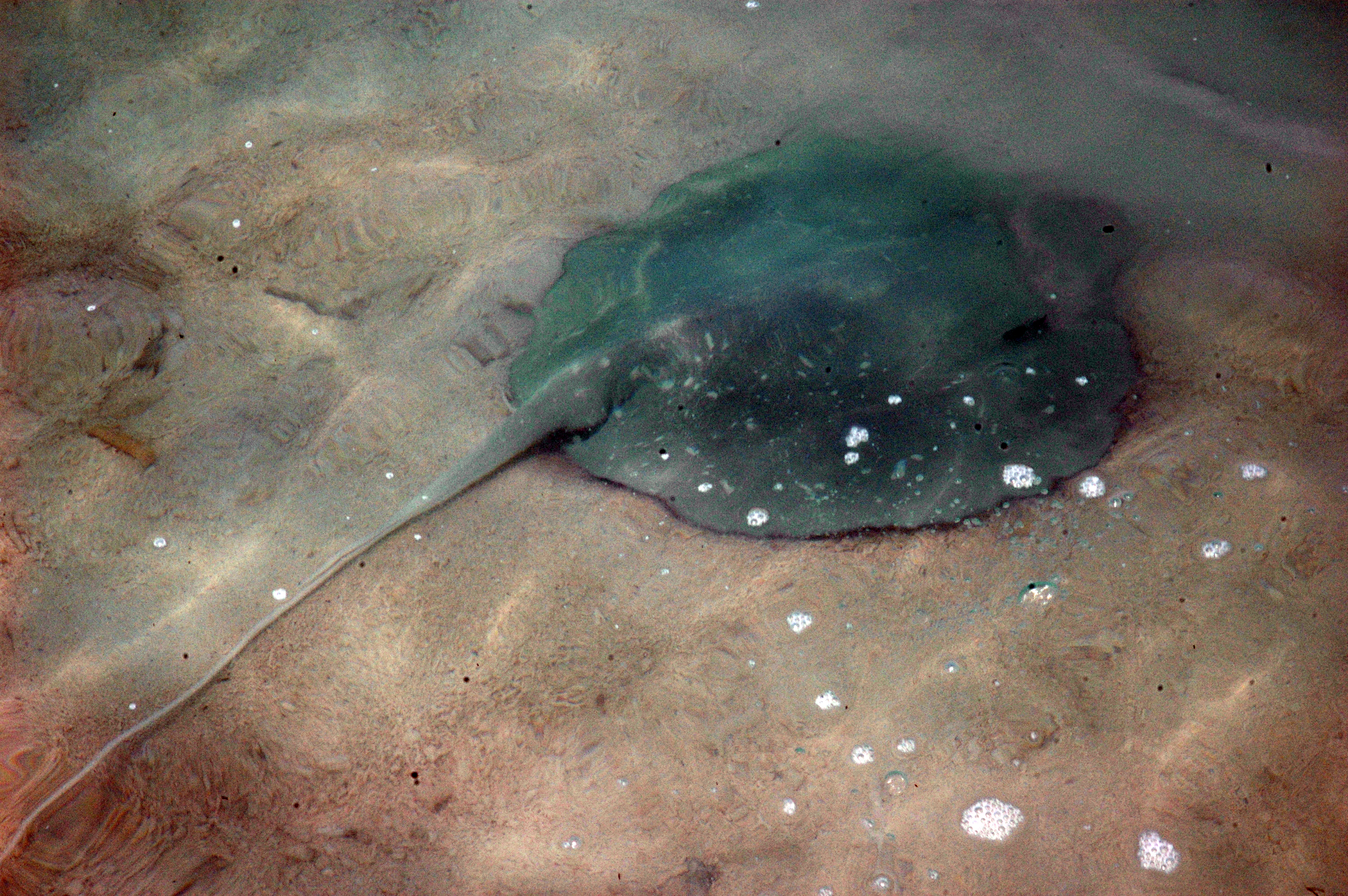|
Mangrove Whipray
The mangrove whipray (''Urogymnus granulatus'') or whitetail stingray, is a species of stingray in the family (biology), family Dasyatidae. It is widely distributed in the Indo-Pacific region from the Red Sea to northern Australia and Micronesia. A benthic fish, benthic inhabitant of shallow inshore waters, juvenile mangrove whiprays favor mangrove and estuary, estuarine habitats, while adults favor sandy to rocky areas in lagoons and coral reefs. This species can be identified by its thick, oval pectoral fin disc that is dark gray above with numerous white flecks, and by its relatively short, whip-like tail that is white past the stinging spine. It grows up to across. Solitary in nature, the mangrove whipray preys mainly on small, benthic, bottom-dwelling bony fishes and invertebrates. It is, like other stingrays, aplacental viviparous, with the females nourishing their unborn young via histotroph ("uterine milk"). The mangrove whipray is caught for its meat, shagreen, skin, an ... [...More Info...] [...Related Items...] OR: [Wikipedia] [Google] [Baidu] |
William John Macleay
Sir William John Macleay (13 June 1820 – 7 December 1891) was a Scottish-Australian politician, Natural history, naturalist, zoologist, and Herpetology, herpetologist. Early life Macleay was born at Wick, Highland, Wick, Caithness, Scotland, second son of Kenneth Macleay of Keiss and his wife Barbara, ''née'' Horne. Macleay was educated at the Edinburgh Academy 1834–36 and then to studied medicine at the University of Edinburgh; but when he was 18 years old his widowed mother died, and he decided to go to Australia with his cousin, William Sharp MacLeay. They arrived at Sydney in March 1839 on HMS Royal George (1827), HMS ''Royal George''. William Macleay took up land at first near Goulburn, New South Wales, Goulburn, and afterwards on the Murrumbidgee River. He is noted as the last of the naturalists in a family active in this field; his uncle was Alexander Macleay, Colonial Secretary of New South Wales from 1826 to 1836, and a member and fellow of societies concerned wit ... [...More Info...] [...Related Items...] OR: [Wikipedia] [Google] [Baidu] |
Pectoral Fin
Fins are distinctive anatomical features composed of bony spines or rays protruding from the body of a fish. They are covered with skin and joined together either in a webbed fashion, as seen in most bony fish, or similar to a flipper, as seen in sharks. Apart from the tail or caudal fin, fish fins have no direct connection with the spine and are supported only by muscles. Their principal function is to help the fish swim. Fins located in different places on the fish serve different purposes such as moving forward, turning, keeping an upright position or stopping. Most fish use fins when swimming, flying fish use pectoral fins for gliding, and frogfish use them for crawling. Fins can also be used for other purposes; male sharks and mosquitofish use a modified fin to deliver sperm, thresher sharks use their caudal fin to stun prey, reef stonefish have spines in their dorsal fins that inject venom, anglerfish use the first spine of their dorsal fin like a fishing rod ... [...More Info...] [...Related Items...] OR: [Wikipedia] [Google] [Baidu] |

.png)